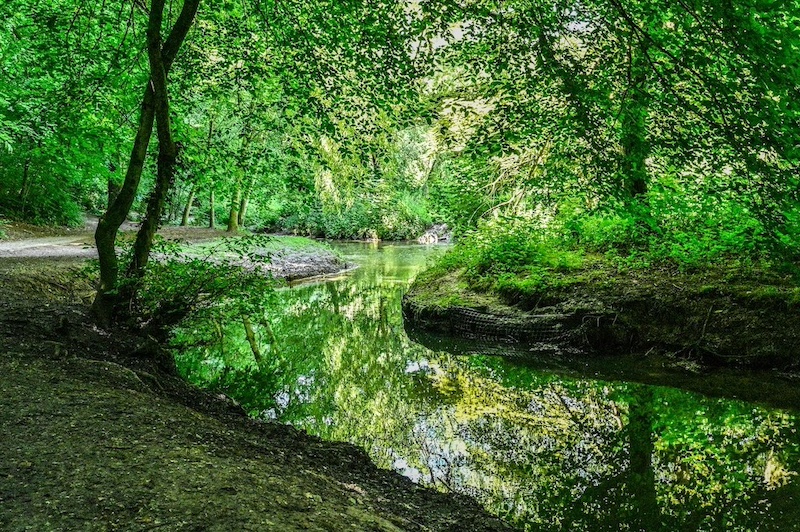I went to Barcelona on a 3-day business trip. I was going to a press conference, but the plane left late, and I arrived later than expected.
After making the accreditation, I’ve just entered the room, but in Spain, at that time, they announced the name of journalists attending conferences. Suddenly, I hear the person announcing me just when I got in.
I was about one hour late, and literally, the whole room was looking at me. Embarrassed, I walked quickly to the chairs at the back, at the very end of the room. This is how my adventure in Barcelona began, a city that sets trends in the arts, design, and gastronomy, with the same intensity with which it gives wings to its bohemian side.
I had little time to get to know the city, so I had to quickly understand what the best way to see Barcelona and without a doubt, it is to walk along the Ramblas a long, tree-lined alley where you will find Plaza de Catalunya along the way and at the end of the Ramblas, you will see the monument erected to Columbus when, after discovering the New World, it arrived at Barcelona.
1. The Ramblas
Each tourist section of the sidewalk has a name. The Rambla de Les Flors is magnificent, with its colorful flower stands. In the Rambla de Canaletes, you will find a fountain, the history tells that whom who drinks from this water will always return to the city. Altogether, there are six different parts that explain the reason for the name Ramblas.
Thousands of people come here to admire the painters and living statues. Joan Miró’s work is printed in the mosaic on the floor. Take the elevator to the viewpoint, 60 meters high. Don’t forget to walk through La Boquería, a bustling and famous market.
2. On the Path of Art
Explore the Modernist route, because, in addition to the admirable and eccentric Antoni Gaudi, the city is a showcase of art and works by famous painters around.
Passeig de Gràcia avenue is very elegant, and art undoubtedly lives here. The most impressive façade is Natividade, but there are others that are absolutely admirable.
In Casa Batlló, the roof looks like the scales of a reptile and the structure of the windows resembles a skeleton. On the other hand, Casa Milà (La Pedrera), is wonderful, there is so much creativity that it is not possible to describe all. It was built at the beginning of the 20th century and is Gaudí’s last project before was fully dedicated to the Holy Family.
Also visit Fundació Miró, where the best of the work of the surrealist Catalan Joan Miró is kept. Some of his most famous paintings are in this museum, in addition to tapestries and sculptures. Also, not to be missed is the Picasso Museum, where you can take a journey through all phases of the cubist genius. The Palau de la Música is another masterpiece you should see, it belongs to the architect Lluís Domènech i Montaner, whose prestige is compared to Gaudí. The multicolored glass mosaic on the ceiling of the concert hall is superb. Finally, visit the Museu d’Història in Barcelona, where you can walk on a platform over Roman ruins.
3. Gothic Quarter
With a history of more than 2,000 years, Barcelona was born as Barcino, a colony of the Roman Empire. This past lives on in the oldest part of the city. Located between the Ramblas and Via Laietana, the Gothic Quarter is a labyrinth of alleys and surprising small squares. In Gothic style, admire the Barcelona Cathedral and the beautiful Santa Maria del Pi church. Another symbol of the neighborhood is the Plaça Reial, in neoclassical style, decorated with imperial palm trees designed by Gaudí. Surrounded by bars and restaurants the night boils with animation. The coolest version of the Gothic Quarter is its neighbor Born with irresistible shops, excellent restaurants, and a fantastic Basilica of Santa Maria del Mar.
4. Parc Güell
In this chameleonic city, Park Guell opened in 1922, is one of the main tourist attractions in Barcelona, having been declared a World Heritage Site by UNESCO in 1984.
The name inherited it from Eusebi Güell, a businessman in love with the works of Gaudí, who was his main patron.
Right at the entrance to the park, I came across two little houses that look like they were out of a children’s story. In one there is a store, in the other, pass movies about the past of this place, which undoubtedly stands out for the difference and originality.
The park takes inspiration from the forms of nature. The shapes and colors of the park’s elements have an important political and religious symbolism. There is a path of spiritual elevation at the highest point of this place. Here, a chapel was planned but it has been replaced by a monument to Calvary, where I assure you, you will have the best view of the city.
With more than 17 hectares, Park Güell is made of wavy shapes, columns that are drawn like trees, animal figures, and geometric shapes. The surfaces are decorated with colorful ceramic mosaics.
The central point is a huge square in which there is a large bank 110 meters long, with the appearance of a snake covered by small pieces of ceramic.
5. The Holy Family
Gaudí dedicated 40 years of his life to his greatest challenge: the construction of the Basilica of the Holy Family. Without completing the project, the architect was buried in the construction crypt. The Holy Family is the eternal incomplete work. Construction began in 1882, but the works seem to have no end. It is said that maybe in ten years it will be ready, we will see if it will be so.
The church managed to acquire a unique style in the world of architecture and modern art.
Barcelona is not just a city but an art piece.













